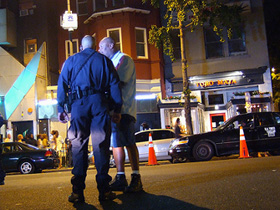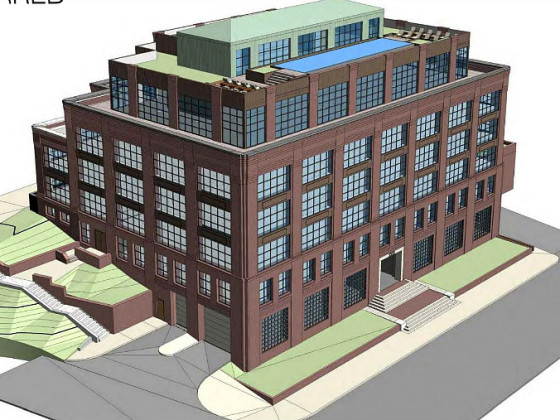What's Hot: Nearly $1 Million An Acre: Pricey Land Sale Near Dan Snyder's Alexandria Home Closes Out 2025
 How to Research Crime in DC
How to Research Crime in DC
✉️ Want to forward this article? Click here.

DC police. By Neil Cooler.
Judging the safety of your neighborhood (or a neighborhood that you would like to move into) can be difficult. Anecdotal evidence can loom disproportionately large, and crime maps that provide statistics can be inaccurate or outdated. We’ve gathered a few sources that may help provide a realistic sense of what is going on, crime-wise, in DC neighborhoods.
Map It
As noted above, crime maps can sometimes provide a skewed or inaccurate picture of crime in a given neighborhood. That said, for individuals willing to drill down into the data, they are often the best place to start.
The DC Crime Map provides users with crime statistics within the vicinity of any address in the city limits, and allows users to choose a radius around that location as well as a specific time period to help define the search. For instance, users can search for crimes that occurred within 250, 500 or 1,000 feet of a given property over the course of the last few months, the last year, or just during 2012.
What pops up after the parameters are defined is a breakdown of violent crimes and property crimes as well as a complementary map that provides the exact locations of those crimes. A spreadsheet is also provided that allows users to compare statistics from the chosen search with past statistics. For instance, if you search for crimes committed in the past year you’ll be able to compare those stats with crimes committed during the year prior to that, along with a calculation of the net change that provides a nice visual of the direction a neighborhood may be heading.
Other sites that offer crime mapping tools include SpotCrime, CrimeReports and EveryBlock DC, which offers a handy search tool that reveals all the crime that has taken place around DC. Sort by neighborhood, zip code or address, and EveryBlock will bring up info provided by the Metropolitan Police Department (MPD) through their Crime Incidents Data Feed.
ANC Meetings
Area Neighborhood Commission (ANC) meetings can be long affairs. But, at the start of all monthly ANC meetings, a police officer stops by to brief the community on the crime situation. This can be a good opportunity to hear about any trends, like upswings in muggings, car break-ins, and so on, and the officer will usually relay the steps that are being taken to address these incidents. ANC meetings are open to the public; you can find out when and where your ANC meets here.
Listservs
Neighborhood email listervs are an excellent way to keep abreast of all sorts of news in the neighborhood, and to discuss crime and safety strategies. The MPD also has listservs for each district — this is MPD 5D’s, for example — which exist solely for the police to discuss crime and suspicious behavior with neighbors. In addition to a variety of conversations, most of these offer a daily run-down on crime.
Blogs
Several neighborhood blogs not only report on crimes in the areas that they cover, but provide a detailed account of what exactly happened, sometimes from the victim themselves. Prince of Petworth usually gets the scoop on stabbings, shootings, fires, bike accidents and a myriad other dark happenings shortly after they occur.
Readers, how else can someone find out more about the state of crime in their neighborhood?
Similar Posts:
See other articles related to: crime
This article originally published at http://dc.urbanturf.production.logicbrush.com/articles/blog/how_to_research_crime_in_dc/5749.
Most Popular... This Week • Last 30 Days • Ever

With frigid weather hitting the region, these tips are important for homeowners to ke... read »

Today, UrbanTurf offers a brief explanation of what it means to lock in an interest r... read »

The 30,000 square-foot home along the Potomac River sold at auction on Thursday night... read »

An application extending approval of Friendship Center, a 310-unit development along ... read »

A key approval could be coming for a proposal to convert a Georgetown office building... read »
DC Real Estate Guides
Short guides to navigating the DC-area real estate market
We've collected all our helpful guides for buying, selling and renting in and around Washington, DC in one place. Start browsing below!
First-Timer Primers
Intro guides for first-time home buyers
Unique Spaces
Awesome and unusual real estate from across the DC Metro














